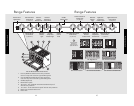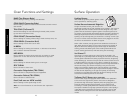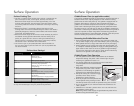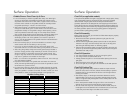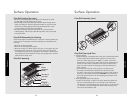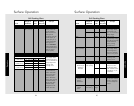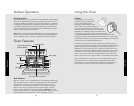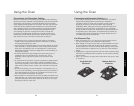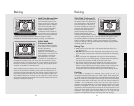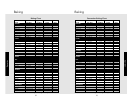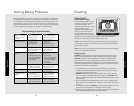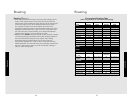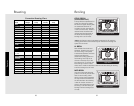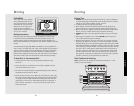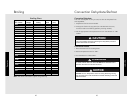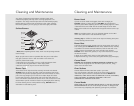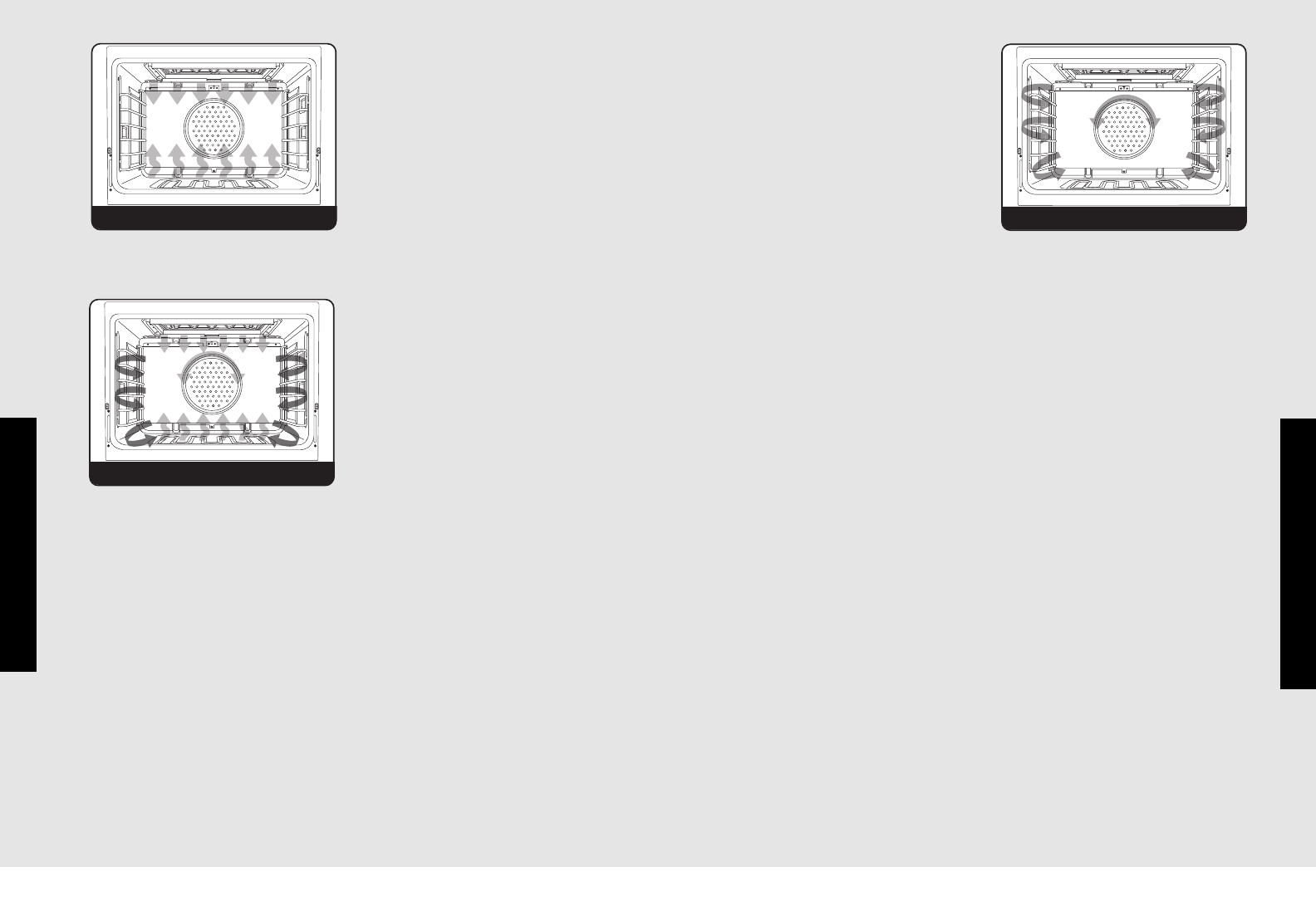
Operation
31
30
Operation
BAKE (Two-Element Bake)
Full power heat is radiated
from the bake element in the
bottom of the oven cavity and
supplemental heat is radiated
from the broil element. This
function is recommended for
single rack baking. Many
cookbooks contain recipes to
be cooked in the conventional
manner. Conventional baking/
roasting is particularly suitable for dishes that require a high
temperature. Use this setting for baking, roasting, and casseroles.
CONV BAKE
(Convection Bake)
The bottom element operates
at full power, and the top broil
element operates at
supplemental power. The
heated air is circulated by the
motorized fan in the rear of the
oven providing a more even
heat distribution. This even
circulation of air equalizes the
temperature throughout the oven cavity and eliminates the hot and
cold spots found in conventional ovens. A major benefit of convection
baking is the ability to prepare food in quantity using multiple racks—
a feature not possible in a standard oven.
When roasting using this setting, cool air is quickly replaced, searing
meats on the outside and retaining more juices and natural flavor on
the inside with less shrinkage. With this heating method, foods can be
baked and roasted at the same time with minimal taste transfer, even
when different dishes are involved, such as cakes, fish or meat. The hot
air system is especially economical when thawing frozen food. Use this
setting for baking and roasting.
two-element bake
TRU CONV (TruConvec™)
The rear element only operates at
full power. There is no direct heat
from the bottom or top elements.
The motorized fan in the rear of
the oven circulates air in the oven
cavity for even heating. Use this
setting for foods that require
gentle cooking such as pastries,
souffles, yeast breads, quick
breads and cakes. Breads, cookies,
and other baked goods come out evenly textured with golden crusts.
No special bakeware is required. Use this function for single rack
baking, multiple rack baking, roasting, and preparation of complete
meals. This setting is also recommended when baking large quantities
of baked goods at one time.
Baking Tips
• Make sure the oven racks are in the desired positions before you
turn the oven on.
• DO NOT open the oven door frequently during baking. If you must
open the door, the best time is during the last quarter of the baking
time.
• Bake to shortest time suggested and check for doneness before
adding more time. For baked goods, a stainless steel knife placed in
the center of the product should come clean when done.
• Use the pan size and type recommended by the recipe to ensure
best results. Cakes, quick breads, muffins, and cookies should be
baked in shiny, reflective pans for light, golden crusts. Avoid the use
of old, darkened pans. Warped, dented, stainless steel and tin-
coated pans heat unevenly and will not give uniform baking results.
Proofing
This setting is designed for allowing yeast dough to rise to a
temperature between 85°F (29°C) and 100°F ( 38°C). Yeast doughs rise
or “proof” best when the temperature is between 85°F (29°C) and 100°F
(38°C). To make sure the dough is warm enough, cover the bowl loosely
with plastic wrap and/or cloth towel. Turn the oven function selector to
“PROOF”. Turn Temperature control until the oven light comes on
(typically around 200 degrees on the knob setting). Note that the Proof
function is designed to keep the oven between 85°F and 100°F
regardless of what temperature the knob is set at. Place the bowl on the
center rack of the oven and close door. When you think the dough has
doubled in size, lightly poke 2 fingers about 1/2” (1.3 cm) into the
dough. If the indentation remains, the dough has risen enough.
convection bake
TruConvec™
Baking
Baking



